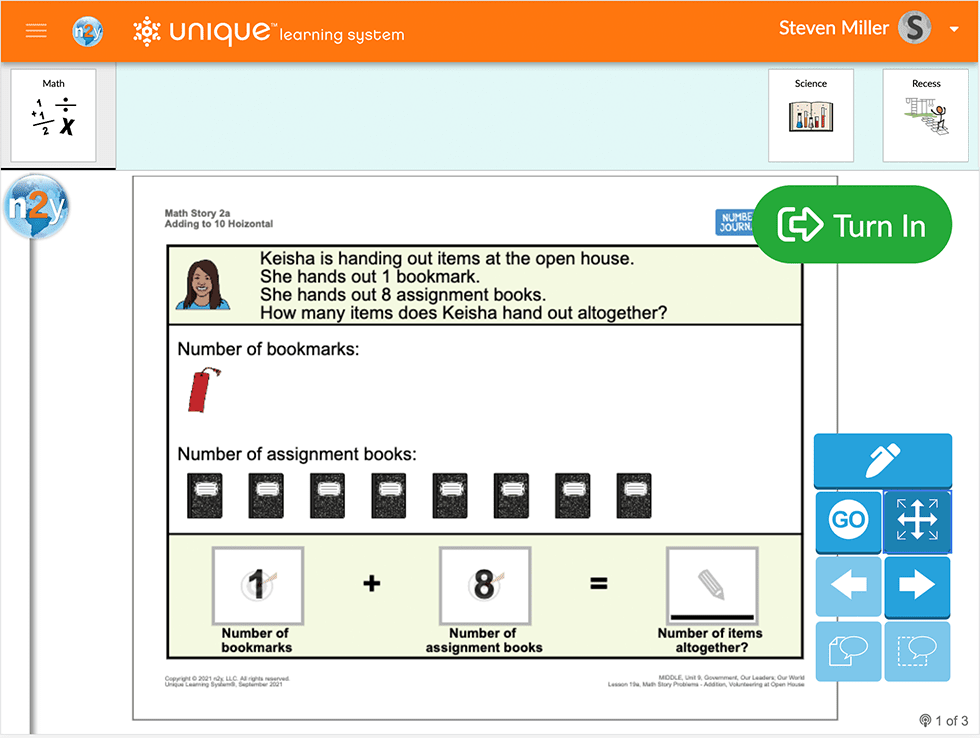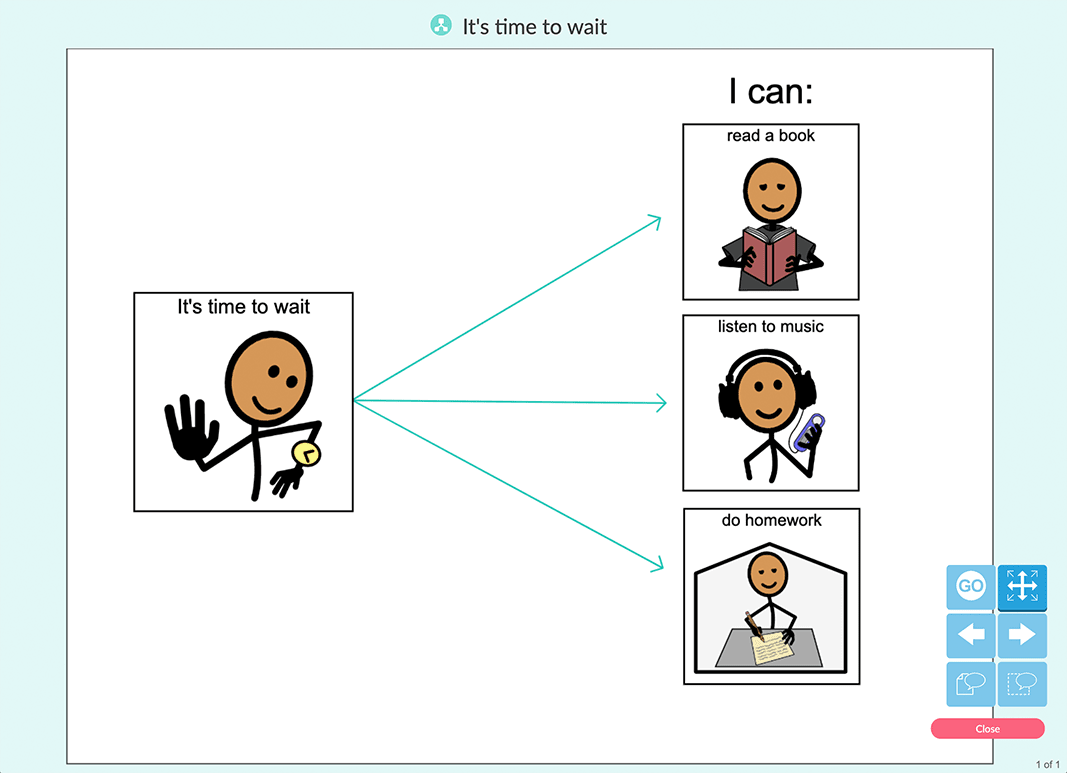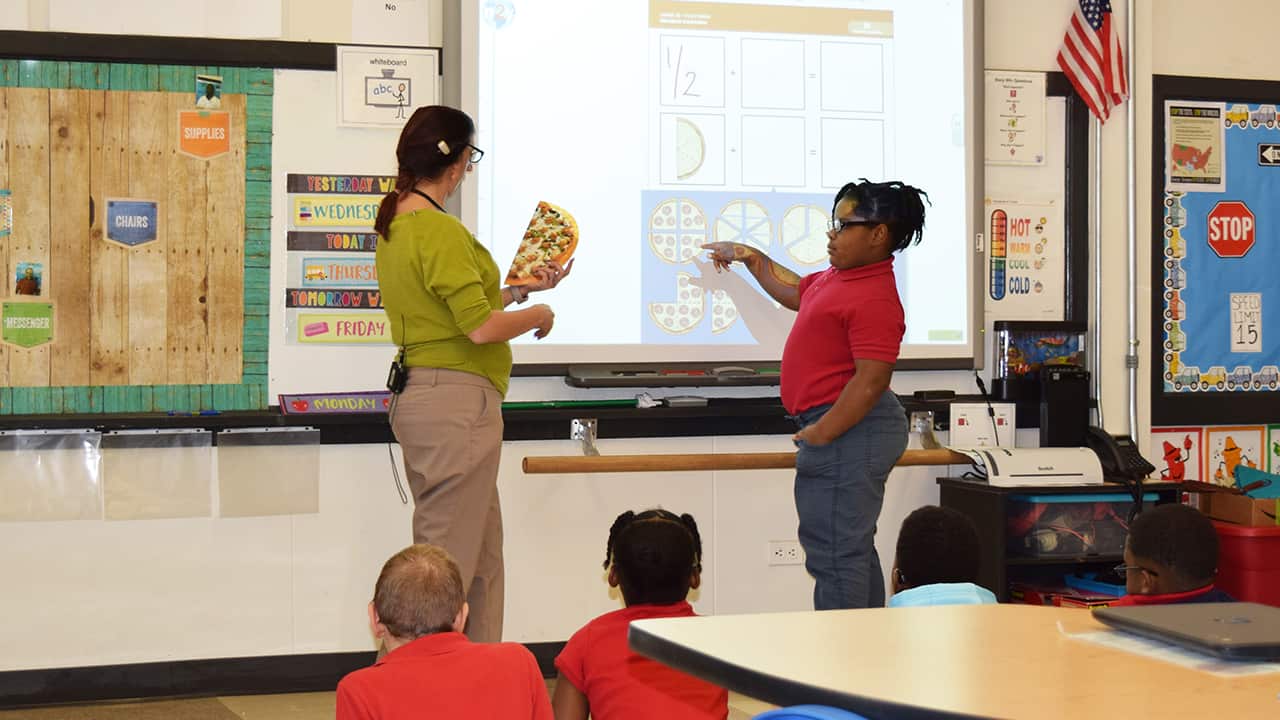A learner’s ability to self‑regulate in the classroom allows them to focus on their schoolwork and gain knowledge and skills from their teacher. The outcome of self‑regulation—the ability to control one’s body and mind—is easy to see: learners focused on their work, listening to their teacher, asking questions, and collaborating with peers. The path to this skill is often difficult but crucial on the journey to improving social‑emotional skills for learners. Behind the end result, four key factors influence the areas of self‑regulation in the classroom.
First, what are the four areas of self‑regulation?
1. Self‑Monitoring
Students with strong self‑monitoring skills can check their work for errors, maintain focus on tasks, and ask questions or seek help when they are struggling.
2. Self‑Instruction
Students with strong self‑instruction skills can use visual aids to help them solve problems, maintain task‑related information in their thinking, and use self‑talk to persevere through difficult situations.
3. Goal Setting
Students who can set realistic academic and life goals can also assess their current progress toward a skill, create an action plan to achieve their goal, and follow through on those steps.
4. Self‑Reinforcement
Students with strong self-reinforcement skills can prioritize work over play, choose rewards for completing assignments, and switch between activities with little difficulty.
Next, three evidence‑based practices to address self‑regulation
Mastery of skills in the areas related to self‑regulation will serve students throughout life. These skills are helpful for students to have; however, direct instruction and practice will be necessary to help them achieve independence in these areas. There are endless ways to promote and practice these skills in your classroom. Let’s explore three ways you can begin right away!
1. Visual Schedules

A visual schedule is a must‑have for many students. Those who thrive on this structure show increased attention to tasks and do better with transitions from one activity to the next. Providing a visual schedule helps students remain focused, and their anxiety is reduced since they know what is coming next!
2. Decision Trees

Place symbol reminders throughout the school environment where students need to perform multi‑step tasks. Try creating a decision tree or checklist for complex skills such as answering comprehension questions or completing multi‑step math problems. Make sure to teach complex skills using the same symbols as in the reminders for consistency. Using decision trees for guiding individual tasks is a great way to improve self‑monitoring skills. Giving students the ability to mentally check each step gives them a nice visual to see how they can complete each step and monitor their progress toward completing the task. They can use these reminders if they get stuck or forget a step during the task. Students can use self‑instruction to complete the task without adult help, which will increase their independence.
3. Behavior Tracking and Incentive Charts
![]()
Tracking a student’s behavior through comprehensive documentation allows for making better data‑informed decisions. By targeting specific behaviors when collecting data, strategies and interventions can be designed and adjusted as needed. Sharing the collected behavior data with students is encouraging because they can see their growth. Students can then practice goal‑setting skills by creating a personal goal. They can work with their teacher to see if they are on track to meet their goal. Teaching students to self‑monitor their behavior will benefit them in other settings as well. Take the time to discuss any documented incidents with the student. Exploring what caused the incident and how they can improve their response the next time will not only help the student meet their behavior goals but improve their ability to self‑regulate in the future.

Another way students can work toward achieving self‑regulation skills is through improving self‑reinforcement skills with incentive charts. These visual tools reinforce behaviors the teacher wishes to see repeated. Have the student pick from a list of positive reinforcers to work toward and what will need to be earned for them to receive the incentive. When students can see the reinforcement they are working toward, they will be motivated to complete their work or tasks and will increase their self‑regulation.
Some other factors that influence self‑regulation
While teaching and practicing self‑regulation using evidence‑based practices is necessary, it is not the only factor that influences a student’s success with these skills. Let’s look at some other considerations when taking action to help your students gain self‑regulation skills:
Classroom Environment
The classroom environment for a learner plays a huge role in their ability to self‑regulate. It is important to take those needs into consideration when designing their classroom environment.
- Consider the group size each student is best able to learn in and design classroom areas to accommodate that size.
- Try to foresee any areas of distraction in the classroom and place students who are easily distracted away from those areas.
- Create classroom incentive charts to keep students focused on positive behaviors and help them control their impulses.
- Embrace student diversity in your classroom and ensure your students feel a sense of belonging in their classroom. Look around your room. Do your visuals represent all your students in addition to people in your school and community? Students who have a strong sense of self and belonging are likely to achieve skills such as self-management and self-determination.
- Use visuals to set up the classroom environment so that designated areas, cabinets, and supplies have labels with symbols and text that are easily seen by all learners.
Executive Functioning Skills
Executive functioning skills—the ability to plan and organize things in one’s head—are often more difficult for unique learners to master. Instructors should use evidence‑based strategies to support students’ executive functioning to help them self‑regulate.
Student Engagement
When a student is engaged in learning they are more likely to use self‑regulation skills to manage their learning environment. Teaching with interest‑based materials will help keep individual students engaged in lessons. When engagement is achieved, then self‑regulation can follow. Additionally, giving students access to hands‑on learning and activities will also promote engagement and assist with retention of information learned. Provide opportunities for breaks and movement throughout the day so students have the opportunity to refocus their attention and remain on task during lessons.
Being proactive about students’ self‑regulation and addressing each of the four areas of self‑regulation with evidence‑based practices can help unique learners become efficient, well‑regulated students. Furthermore, teachers spend less time redirecting students in class, allowing for more time to teach and invest in meaningful relationships. Anticipating students’ self‑regulation needs and providing the right amount of support allows learners to become independent and focused, which leads to a classroom full of engaged students who are ready to learn.



